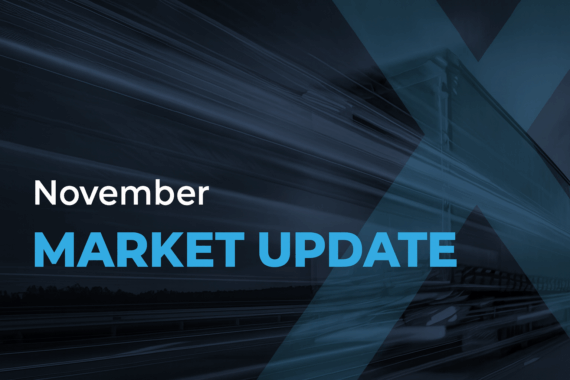
End-to-end visibility changes the game for shippers, carriers
Supply chain transparency benefits every player in the industry
This story originally appeared in the Freightwaves.
Companies across the supply chain have been laser-focused on improving their visibility options over the past several years. While most companies understand that visibility paves the way for increased efficiency and better coordination throughout the lifecycle of a shipment, many leaders in the space do not yet have a solid understanding of partial versus complete visibility.
Virtually all visibility solutions offer some level of value to users because they increase the amount of data available to decision-makers and stakeholders. Complete, end-to-end visibility solutions, however, change the game entirely. A holistic visibility tool goes beyond simply providing data, instead creating a pathway for companies to identify and mitigate risks proactively – from transportation disruptions to supplier issues and unforeseen delays.
Additionally, complete visibility solutions are the only tools that are able to meet shippers’ growing expectations surrounding shipment transparency.
“With the software advancements we’ve seen over the past decade, customers now expect transparency and reliability,” according to a Troy Cook, Vice President of Sales and Marketing. “End-to-end visibility leads to better delivery estimates, quicker response time to customer inquiries and ultimately, enhances customer satisfaction for our shippers.”
A truly holistic visibility solution has the power to bring supply chain partners – including suppliers, manufacturers and distributors – together. When there is collaboration between all the different players, the entire operation tends to improve.
This collaborative effort often leads to streamlined routes, minimized disruptions, reduced costs and lead times, improved environmental impact and increased innovation. All of these advantages factor into a stronger, more resilient supply chain, and it starts with transparency.
On a more individual level, end-to-end visibility solutions also impact each player in a company’s org chart. There are a multitude of people in any given company’s supply chain – including production experts, salespeople, warehouse employees, logistics professionals and leadership teams. While each of these groups performs a different function, they all impact the supply chain and are all integral to the company’s success.
“Visibility within logistics impacts each of these roles significantly,” according to Cook. “The warehouse needs to know where inbound trucks are to coordinate their docks. The sales team needs to understand current trends in the freight market so they can build in the appropriate cost. The customer service teams need to know where the product is to ensure their clients receive their products on time. Logistics needs to know which orders can easily be planned and routed together to reduce the overall cost of shipping. And the executive leadership teams need to be able to easily track the overall cost of transportation and be able to identify what factors have the greatest impact on that cost.”
Understanding which factors have the greatest impact on cost is the first step in creating a more cost-effective – and attractive – operation. For shippers, this is paramount, as controlling transportation costs and working efficiently are the two biggest factors when it comes to their logistics operations.
Optimized shipping routes and consolidated shipments are powerful methods of cutting out wasteful transportation spend. A strong transportation management system (TMS) – like XTMS offered by DLX – excels at gathering the supplier data needed to implement these methods, including transit time, number of loads, weight and destination.
The information that comes from a high-quality TMS is a crucial component of saving money and reducing loss, but the effort should not stop there. The more human-centered elements of the logistics industry – including customer service – are also critical.
“DLX is unlike other 3PLS and standard transportation management systems. We offer a state-of-the-art TMS, but it’s the customer service that we deliver to our partners that sets us apart,” George Schergen, Vice President of Client Services said. “A lot of other logistics providers will implement the software and call it a day.”
At DLX, customer relationships do not stagnate after implementing XTMS. After adoption, DLX works with its clients to manage their entire supply chain, including providing each user a dedicated account manager to work as an extension of their team.
DLX also offers robust KPI reporting, ensuring customers have the most efficient and cost-effective shipping strategy in place. For that same reason, the company has a team dedicated to auditing invoices and bills to make sure there aren’t any discrepancies or duplicate charges on their accounts.
DLX works hard to create a fair space in the logistics industry by ensuring this comprehensive suite of services is available to its entire clientele, regardless of a company’s size or age going into the partnership.
“Our XTMS and freight broker partners will receive best-in-class service, regardless of their size. That’s something we guarantee,” Schergen said.
Dynamic Logistix is a third-party provider of shipping and freight solutions that combines a world-class technology platform with stellar personal service. Our technology, our culture and our connections with shippers allows us to provide premium shipments to our carrier network.



